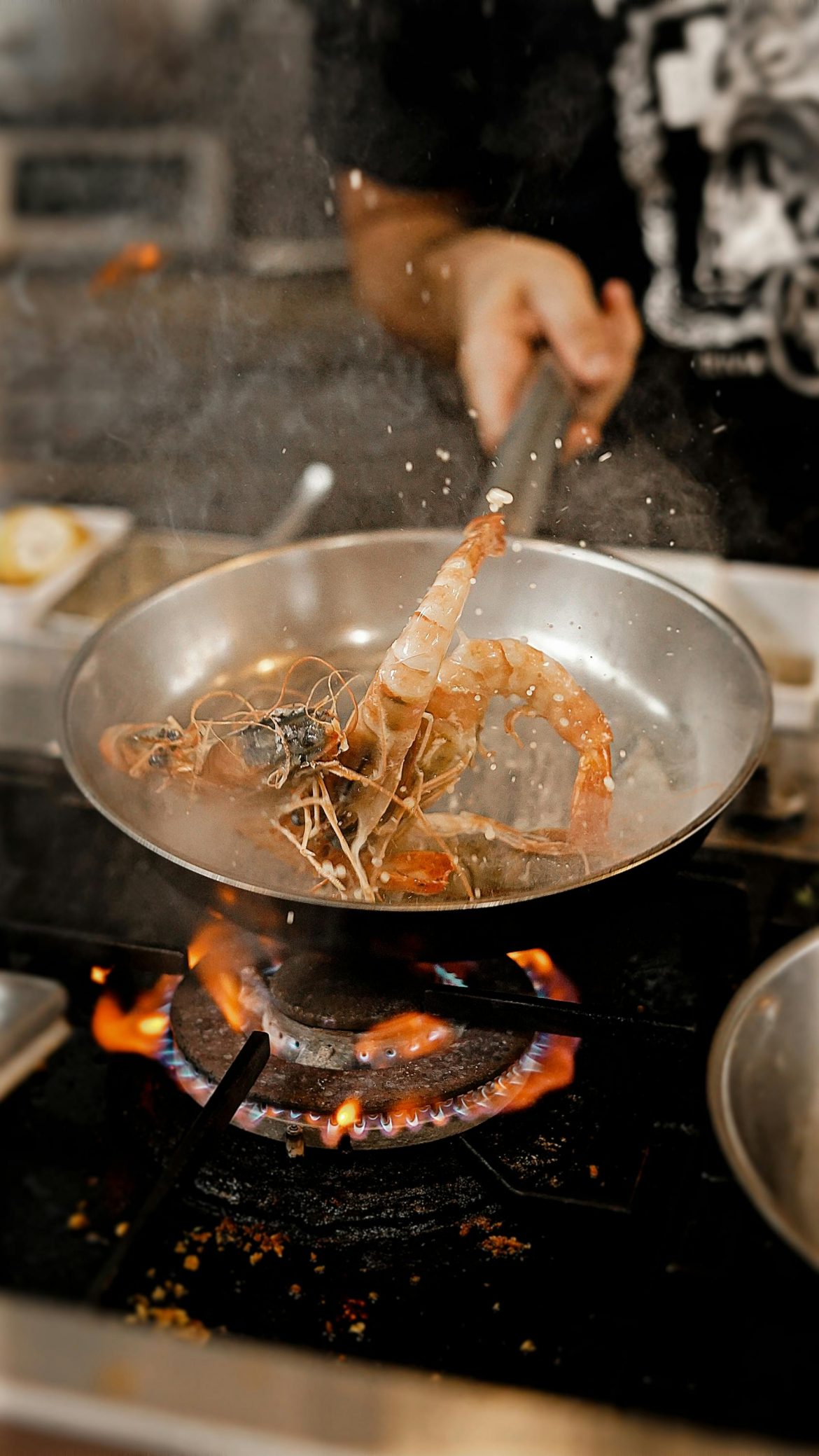Stainless steel pans have many advantages: they perfectly seal and crisp up proteins, they can cook acidic foods in them without a problem (unlike cast iron pans), and metal utensils won’t scratch ’em. Despite these advantages, many cooks don’t use them because they fear the dreaded stick.
Not to worry, there is a way to season stainless steel pans so they become easier to work with. It might not be a permanent, one-time solution, but a small habit that can make a world of difference.
Follow our step-by-step stainless steel seasoning guide to make the most out of your frying pan at home!
1. Bring foods up to room temperature
Fridge-cold foods are a one way ticket to a sticky mess in the pan. Take whatever you want to cook, eggs or proteins, out of the fridge and leave them to warm up to room temperature for a good 15 to 20 minutes before you get cracking.
2. Preheat, preheat, preaheat!
The second most important step is to preheat the pan. Place it on medium heat and let it warm gradually for 2 to 3 minutes, without anything in it (no oil, no butter, no nothing). After a couple of minutes, test the pan by sprinkling a few drops of water. If they dance and form beads, your pan is ready for action.
3. Add a cool fat
The combination of cool oil or cold butter and a hot pan is the key to non-stick. Give the fat a chance to heat up before frying any food.
4. Start frying
When the oil or butter looks super thin and viscous, it’s time to add the food. And resist the urge to immediately shake or poke it – leave the food to fry on one side for a few minutes. The fat and pan will work together to form a crispy, golden crust that won’t stick when its time to flip.
5. Test the flip
If you think it’s time to flip the food, take a spatula and nudge the food first. If it moves or naturally releases, it’s time to flip. However, if you feel resistance, give a few more minutes.
6. Mantain consistent heat
Keep your pan on medium-high heat for all proteins and veggies. Avoid a smoking hot pan, as the extremem heat will end up burning whatever it comes in contact with.
7. Cleaning and maintenance
Make sure to clean your pan after every use, removing any bits left over from the previous cook. A clean, well-maintained surface is key to avoid sticky messes in the future. Wash with warm soapy water and a soft sponge, avoiding harsh metal scrubbers. For tough spots, simmer water and mild soap in the pan, then use a spatula to gently scrape clean. Occassionally, rub a light layer of oil to maintain a semi-nonstick surface.
Remember that anything new takes some time and practice. But if you stick with these simple steps, you’ll be a stainless-steel pan master in no time!

